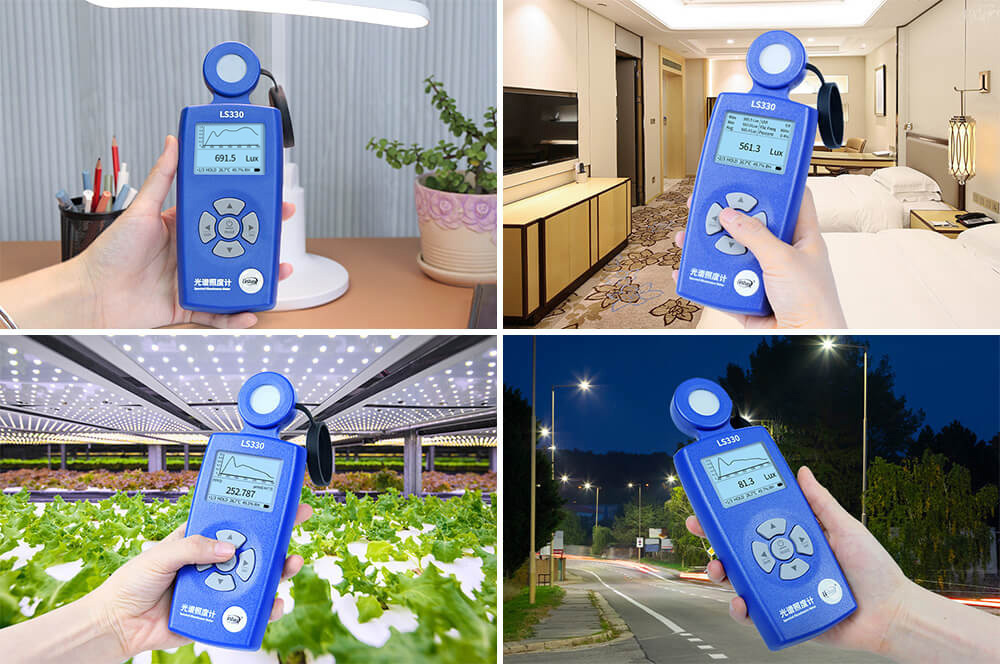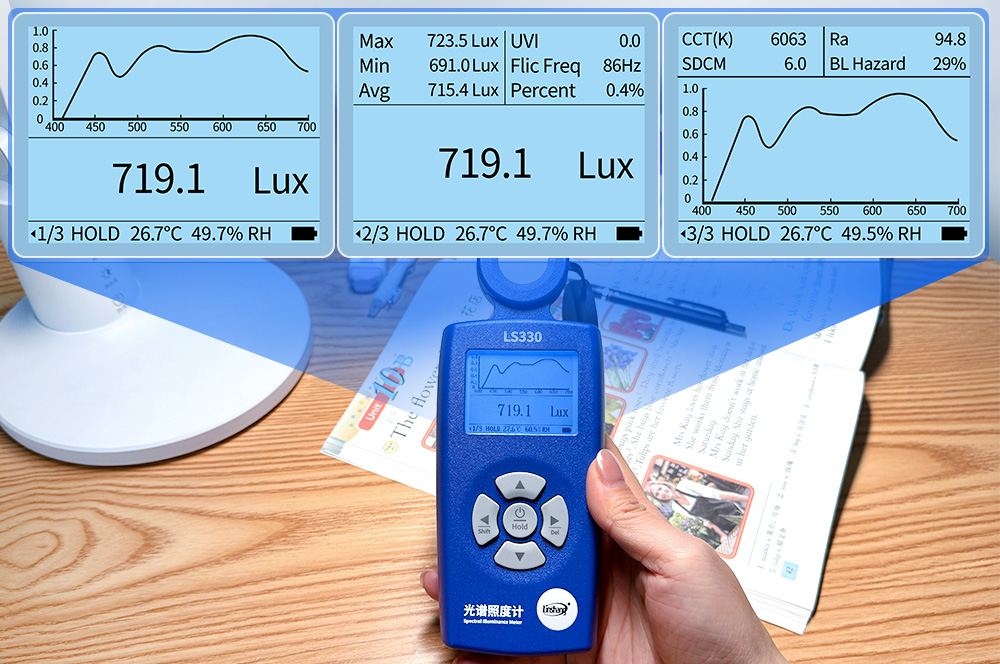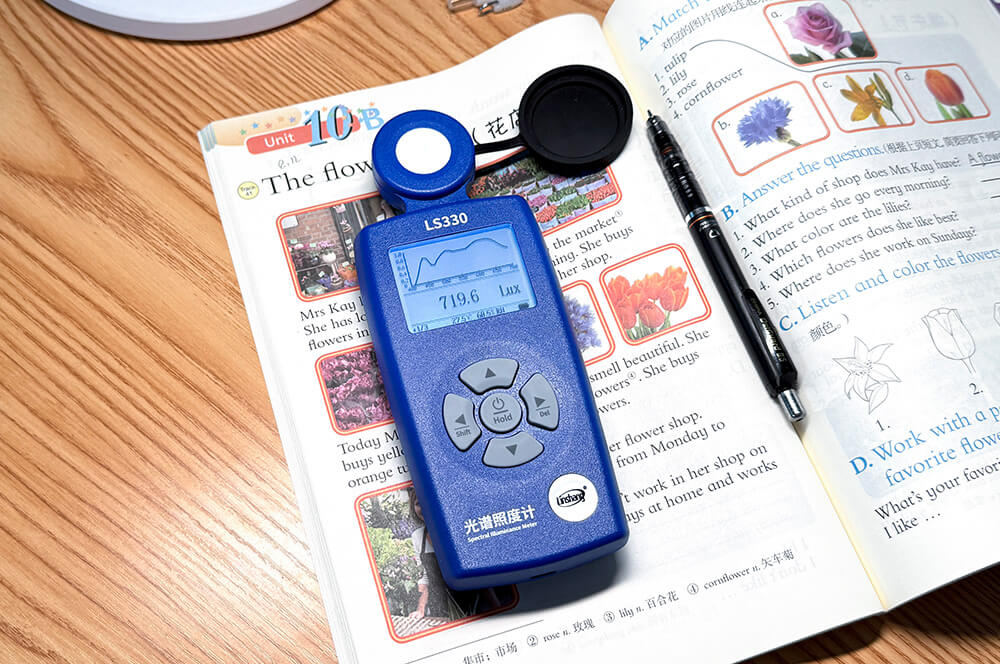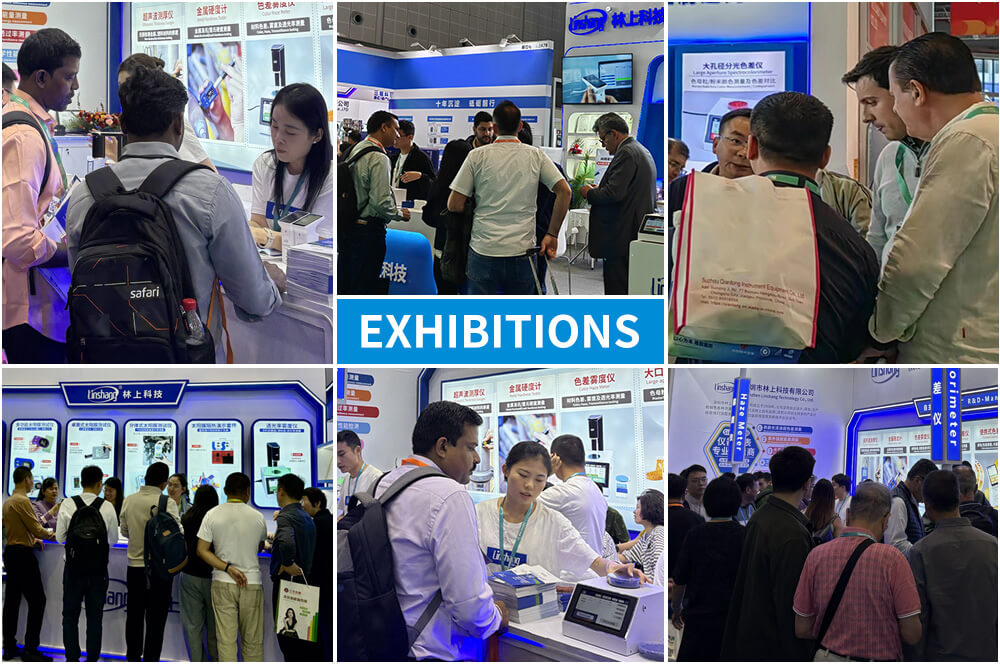The Best Light meter & Lux meter Manufacturer in China
A light meter helps users determine whether lighting conditions meet required standards in various fields such as lighting manufacturing/sales and architectural and indoor lighting design, ensuring optimal lighting environments. For plant enthusiasts, a light meter for plants is especially useful in checking grow lights, ensuring your plants receive the right amount of light to thrive. With so many light meter options available on the market today—featuring different brands, manufacturers, and price ranges—choosing the right light meter has become a key consideration.
Light meter application
-
Quality Inspection and Sales Support for Lighting Fixtures
Light meters can be used for quality inspection of lighting fixtures to ensure their compliance and consistency in production. They can also assist sales staff demonstrating the advantages of the fixtures—such as high brightness and excellent color rendering.
-
Architectural and Indoor Lighting Design
Used to assess whether lighting in office buildings, residential spaces, shopping malls, and schools complies with national or industry standards (such as GB 50034, EN 12464, or ASHRAE). Also applied in lighting retrofits, energy-saving designs, and evaluating light distribution uniformity.
-
Industrial Production and Quality Control
In environments like factory production lines and assembly areas that require specific illuminance levels, illuminance meters are used to verify whether lighting at workstations, warehouses, and inspection areas meets occupational safety standards.
-
Agricultural and Horticultural Lighting
Measures light intensity required by plants (e.g., PPFD, YPFD) to optimize the positioning and brightness of LED grow lights. Also used to control light cycles and intensity in greenhouses and vertical farms.
-
Transportation and Public Safety
Measures lighting levels in tunnels, subways, airports, stations, and roadways to ensure driver visibility and pedestrian safety. Also applicable in monitoring lighting during nighttime construction or emergency scenarios.

Light meter applications
What is a light meter
A light meter, also known as a lux light meter, is a specialized instrument used to measure the illumination level of light sources. Light meters are commonly used in a wide range of applications such as indoor lighting, outdoor lighting, greenhouse cultivation, and stage lighting. They measure brightness in units like lux (lx), foot-candle (fc), or candela per square meter (cd/m²).
Why we need a light meter
In daily life and work, over 80% of the information people receive comes through their eyes, making a well-lit environment critically important. Working in dim lighting not only harms physical health but can also lead to safety risks. So, how can we determine whether the lighting meets proper standards? This is where a light meter comes into play.
A quality lux light meter doesn’t just measure brightness—it can also assess parameters such as color rendering index (CRI), flicker, and blue light hazard, allowing for a comprehensive evaluation of lighting conditions. By using a reliable light meter, we can ensure a safe, comfortable, and visually optimized environment for living, learning, and working.
How does a light meter work
-
Spectral Illuminance Meter (Spectroradiometer)
Principle: Incident light is split into different wavelengths (usually via diffraction grating or interference filters), and measuring the light intensity at each wavelength with a sensor, the lux value is then calculated by weighting the data according to the CIE luminous efficiency function V(λ). This process also provides a wide range of additional light parameters, such as correlated color temperature (CCT), color rendering index (CRI), and PPFD.
High sensitivity and wide applicability, suitable for lighting design, horticultural lighting and other high-end fields.
-
Silicon Photodiode Illuminance Meter (Silicon Light Sensor)
Principle: Utilizes a silicon photodiode to sense visible light intensity; the stronger the light, the greater the current generated. Can be calibrated with optical filters to match the human eye’s sensitivity (i.e., conforms to the CIE photopic luminous efficiency function V(λ)).
Most digital lux meters on the market use this method (e.g., Testo).
How to use a light meter
Taking the Linshang LS330 as an example, the measurement position should be determined based on different application scenarios. For instance, when measuring the illuminance of an office desk, the light meter should be placed directly on the desktop. When measuring road surface illuminance, the meter should be positioned on the ground accordingly. The sensor probe should be placed horizontally and face vertically upwards to simulate how light is received by the human eye or plants. Care should also be taken to avoid shadows from hands, the body, or other obstructions that could interfere with the accuracy of the measurement.
Once the light source to be measured has stabilized, we can press the HOLD button to lock the data. The screen will then display the Lux value, temperature, humidity, and the spectral curve of the light source. By switching the interface, additional information such as the UV index, flicker frequency, flicker depth(Percent), correlated color temperature (CCT), standard deviation of color matching(SDCM), rendition average (Ra), blue light hazard ratio, as well as the maximum, minimum, and average values from multi-point measurements can be viewed.
In plant lighting mode, values such as PPFD (Photosynthetic Photon Flux Density) and YPFD (Yield Photon Flux Density) are also available.
If there are relevant regulations or standards for the measurement method or results, they should be followed accordingly. For example, when evaluating the performance of desk lamps in China, the measurement should be conducted in accordance with the standard GB/T 9473-2017: Performance Requirements for Table Lamps for Paper Task.

Linshang LS330 Light Meter Display Interface
How to choose a light meter
If you need a light meter, how should you choose one? First, you need to clarify your specific needs—do you require measurement of general illuminance or plant-specific lighting (PPFD)? Are there any special requirements, such as viewing the spectral distribution of the light source? Once your needs are clear, you can start looking for instruments on the market that meet those requirements. Then, compare them based on their features, price, and the reputation or reliability of the manufacturer to find the most cost-effective option that suits your needs.
Here, I’ve shortlisted a selection of light meter manufacturers currently available on the market for your reference.
Light meter manufacturers
-
Linshang
Linshang is a high-tech company based in Shenzhen, China. It integrates independent R&D, production, and sales of various measuring instruments. The company offers a wide range of products with high quality and good value. Its light meters can measure not only Lux value, but also CCT, CRI, blue light hazard ratio, PPFD, YPFD, and spectral curves. These devices are feature-rich and meet various measurement needs. At present, the Linshang spectral light meter has become the most cost-effective light meter on the market. For the price of a regular light meter, you can own a multi-functional, multi-parameter spectral light meter. As a supplier with its own factory, Linshang’s strength is beyond question. Whether you need a single light meter or plan to purchase in bulk, the Linshang spectral light meter is worth considering.
Models: LS330 Spectral Illuminance Meter, LS331 Flaw Detection Light Meter
Price: about $110~$300
-
Extech
Extech is a long-established supplier of electronic testing equipment and measurement instruments, known for its professional-grade devices and accurate measurements. The company is headquartered in Nashua, New Hampshire, USA. Their light meters are designed specifically for measuring Lux value and do not measure other parameters.
Price: about $130~$900
-
Konica Minolta
Konica Minolta is a Japanese electronics manufacturer with a long-standing history and strong expertise in optical technology, making it highly professional in this field. Its light meters are easy to operate and are designed to measure Lux value as a single parameter only.
Price: about $1900~$9000
-
TES
TES is a professional meter manufacturer based in Taiwan, offering a wide range of high-quality products. Their light meters are designed to measure Lux value only, with some models capable of displaying the measurement time.
Price: about $180~$600
-
Testo
Testo is a German company specializing in measuring instruments. The company has a long history and is renowned for its professional and precise measurements. Their light meters are also designed only for measuring Lux value.
Price: about $200~$1000
-
Hopoo
Hopoo is a R&D company based in Zhejiang, China, specializing in optical testing. Their light meters offer a wide range of functions—besides measuring Lux value, they can also measure CCT (Correlated Color Temperature), CRI (Color Rendering Index), UV irradiance, and more.
Price: about $400~$1000

Linshang light meter features
The Linshang spectral light meter measures multiple parameters at the same time: illuminance (Lux), correlated color temperature (CCT), flicker frequency, UV index, color tolerance (SDCM), color rendering index (CRI), temperature, humidity, PPFD, YPFD, and more.
The device uses a high-precision spectral sensor that meets the CIE photopic vision standard. It can detect the light spectrum and analyze light intensity across different wavelengths, giving a full evaluation of the light source.
It has a wide measuring range up to 1,000,000 Lux, allowing accurate measurement even under strong light.
The meter can measure flicker frequency and flicker depth, helping to assess the stability of the light source.
It supports CCT, CRI, and SDCM measurements for a full evaluation of light color performance.
It displays the blue light hazard ratio, useful for checking lighting safety in study or office environments.
It can measure plant light parameters like PPFD, YPFD, chlorophyll a, and chlorophyll b, to assess plant growth lighting. It also measures UV index, temperature, and humidity to help create optimal conditions for plant growth.
The device can pass inspection by national metrology institutes, ensuring accurate and reliable data that meets industry standards.
Why choose us
Linshang Technology is a professional light meter manufacturer. With advanced technology, a wide product range, and excellent customer service, we have become the ideal partner for many procurement clients. If you’re looking for a high-performance, cost-effective professional light meter, Linshang is your best choice.
We have invested heavily in R&D and production facilities to ensure that every light meter undergoes strict quality control. Our experienced R&D team continuously improves product performance and integrates cutting-edge technologies, ensuring our devices remain at the forefront in terms of accuracy, stability, and functionality.
With over 17 years of manufacturing experience, our modern factory in Shenzhen is staffed by hundreds of employees and equipped with automated production lines and advanced processing systems. We constantly improve production efficiency and product consistency, aiming to provide customers with reliable and stable light meters.
Our products are exported to regions including Eastern Europe, East Asia, South Asia, and the Middle East. We have served over 100,000 global customers, and we are continuing to expand into more international markets. Linshang has established strong partnerships with many well-known distributors and actively participates in international exhibitions to enhance global brand influence.

As of 2025, we have obtained over 100 patents and certifications, showcasing our strong innovation capabilities and technical strength..
Linshang spectral light meter has become one of the most cost-effective spectral light meters on the market today. Without the need for a high price tag, you can own a device capable of simultaneously measuring multiple parameters such as illuminance, spectral curve, and plant light levels, meeting all your lighting measurement needs in one go.
Light meter FAQs
-
Is it possible to customize the light meter casing or add our company logo?
Yes, we offer OEM and ODM customization services. Please feel free to contact us for more details regarding customization options.
-
Do you have minimum order quantities (MOQs)?
We have no MOQ requirements. Whether you need just one unit or a bulk order, we’re ready to process and deliver your request quickly and efficiently.
-
How soon will the order be shipped after purchase?
We will arrange the shipment as soon as possible after the order is placed, and it will be dispatched no later than 7 working days.
-
Is the product compliant with international certifications such as CE?
Yes, our products are CE certified and meet international standards. The measurement results are accurate and can pass inspection by authorized metrology institutes.
Get in Touch
Please let us know your requirements and we will be in contact with you shortly!
- How to use the gloss meter for baking paint?
- Ultra Convenient Architectural Glass Thickness Measuring Gauge
- Why Will the Linshang Spectrum Transmission Meter Appear "EEE"?
- Measurement Principle and Application of Coating Thickness Gauge
- What is Coating Thickness Meter?
- How to Choose Suitable Solar Film?